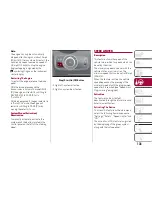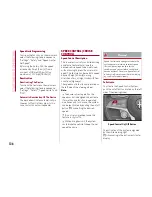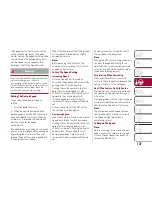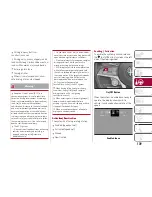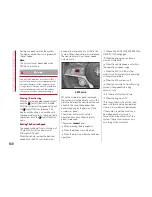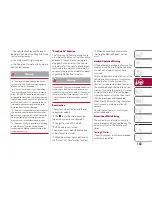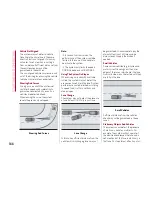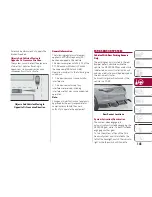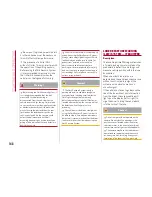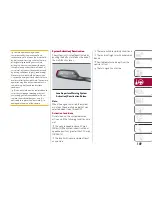
Vehicles With Front And Rear Parking
Sensors — If Equipped
The parking sensors, located in the front
and rear bumpers, detect the presence of
any obstacles and warn the driver
through an acoustic signal and visual
indications on the instrument cluster.
Engagement/Disengagement
To turn the system off, push the Park
Sensors System switch located to the
left of the headlight switch. The indicator
light within the switch will illuminate
when the system is turned off. Pushing
the switch a second time will turn the
system back on, and the indicator light
will turn off.
The indicator light within the Park
Sensors System switch will also be on in
case of system failure. If the switch is
pushed with a system failure, the
indicator light will flash for
approximately five seconds. The light will
then stay on constantly.
Note:
When the ignition is cycled to ON, the
Park Sensors system keeps the last state
when the engine was stopped (activated
or deactivated) in its memory.
System Activation/Deactivation
When the REVERSE gear is engaged and
the system is on, the front and rear
sensors are activated. If the vehicle
moves from REVERSE to a forward gear,
the rear sensors are deactivated, while
the front sensors remain active until the
speed of 9 mph (15 km/h) is exceeded.
Operation With A Trailer
The operation of the rear sensors is
automatically deactivated when a
trailer’s electrical connector is plugged
into the vehicle, while the front sensors
stay active and can provide acoustic and
visual warnings. The rear sensors are
automatically reactivated when the
electrical connector is removed.
Note:
Some conditions may influence the
performance of the Park Sensors
System:
Reduced sensor sensitivity could be
due to the presence of ice, snow, mud, or
thick paint on the surface of the sensor.
The sensors may detect a false
obstacle (echo interference) due to
mechanical interference, for example
when washing the vehicle or in extreme
weather.
The signals sent by the sensors can
be altered by the presence of ultrasonic
systems (e.g. pneumatic brake systems
of trucks or pneumatic drills) near the
vehicle.
System performance can be
influenced by the position of the
sensors. For example, due to a change in
the ride setting (caused by wear to the
shock absorbers or suspension), by
changing tires, overloading the vehicle or
operations that require the vehicle to be
lowered.
Front Sensor Locations
Rear Sensor Locations
147
Summary of Contents for Stelvio 2019
Page 10: ...This page is intentionally left blank...
Page 12: ...This page is intentionally left blank...
Page 156: ...154 This page is intentionally left blank...
Page 165: ...Control Unit Under Passenger Side Footboard Passenger Side Control Unit 163...
Page 167: ...Luggage Compartment Fuse Box Luggage Compartment Control Unit 165...
Page 184: ...182 This page is intentionally left blank...
Page 236: ...234 This page is intentionally left blank...
Page 244: ...MENU button Opens the main menu Menu Button 4 Menu Button 242 MULTIMEDIA...



